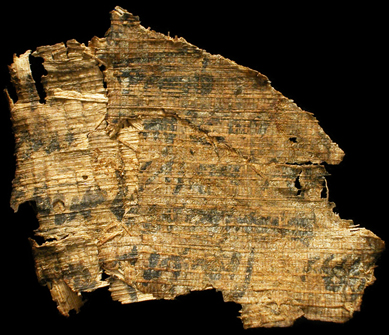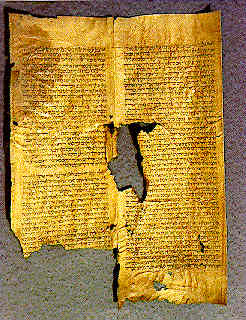A discussion came up during a session of my writing group, a while back,
debating types of ancient paper. One of us had written about ancient writing surfaces and symbols. We briefly discussed which words described ancient papers and I told them I would look into it further. Here is what a brief study of the subject turned up.
Papyrus
Egyptians made papyrus paper from the papyrus plant, a reed
that grew along rivers. According to Fitz
Museum, the ancient peoples also used the papyrus plant to make small,
boats, sandals, mats and baskets. Because of the dry climate of Egypt, a number
of examples of papyrus paper have survived from ancient times. ScienceBuddies.org
describes how the paper was made from pulpy insides of the papyrus stalks.
Mediterranean paper-makers laid long slices of the pulp on top of one another
in opposite directions. Compressing them while drying created a fairly smooth
writing surface. The modern word paper derives from the word
papyrus.
Parchment
Parchment is ancient “paper” fashioned from animal skins.
Evidence of this form of writing surface dates back over 4000 years. According to one article, the first true,
two-sided parchment was called vellum. Pergamena.net relates
that King Pergamon, of modern day Turkey, brought parchment production up to a
level where it could rival Egyptian papyrus, circa 150 BC. The word parchment
is derived from Pergamon’s name.
Codices, Scrolls and Books
A codex, in ancient times, was as stack of papyrus papers,
often bound together. Scrolls were simply longer pieces of parchment, rolled up
for storage. Later, when leathers became more refined, they were used to
protect codices, creating what we now know as a book cover. As binding
techniques improved, the forerunner of the modern book was born.


